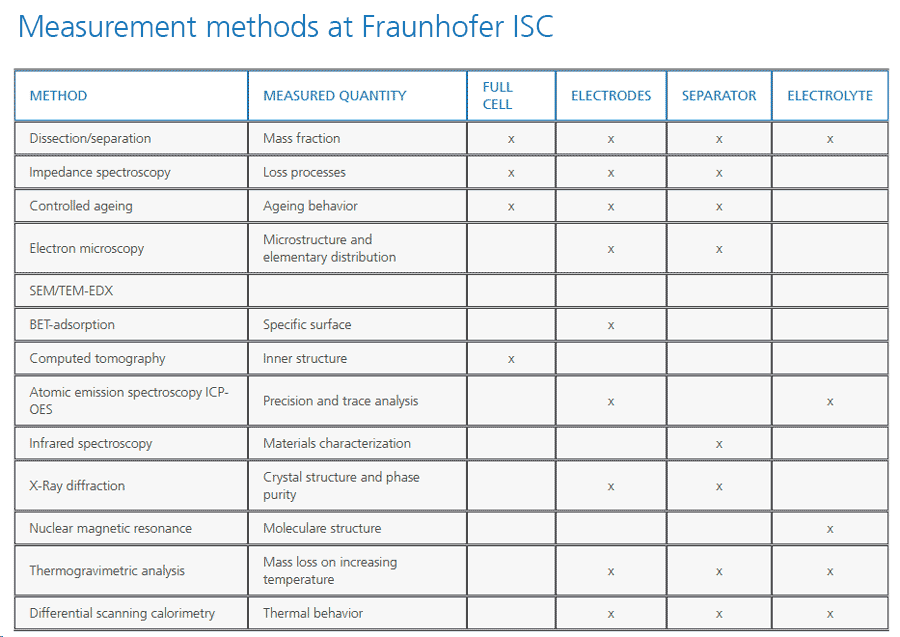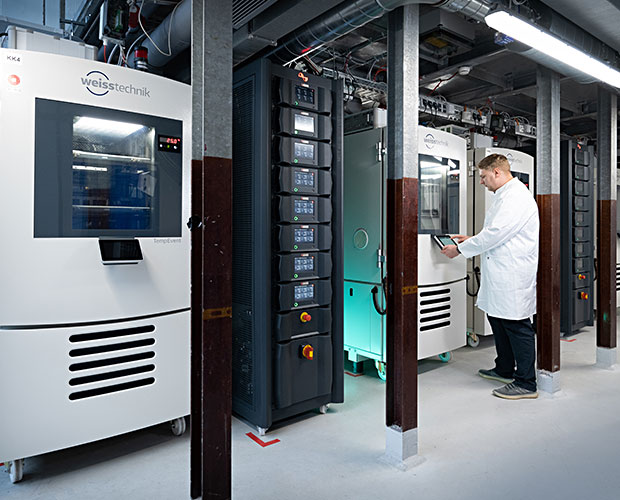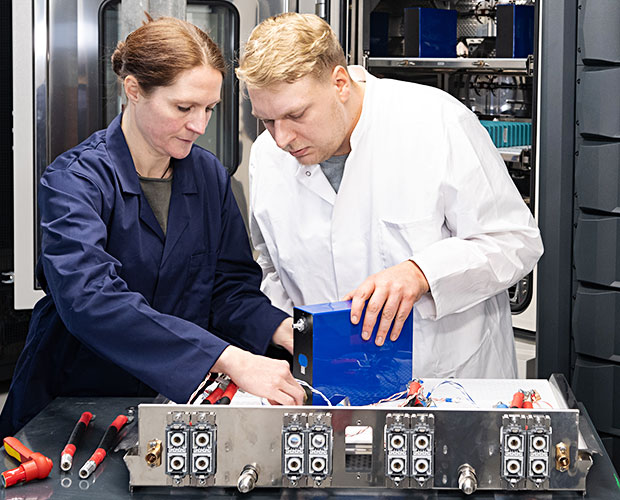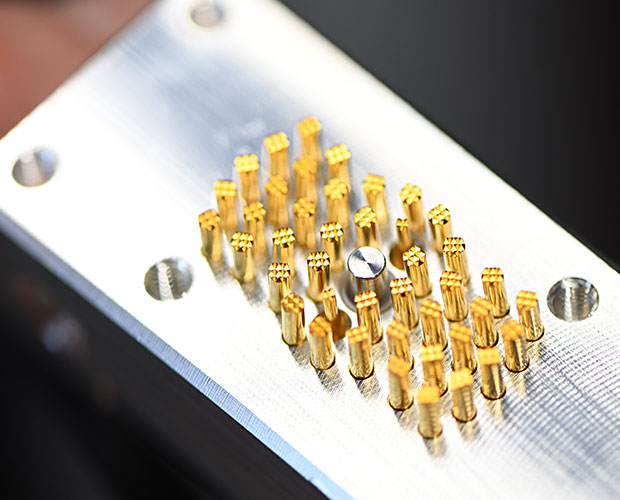The range of electrochemical energy systems is big and so is the chemistry within the cells. Depending on the battery application, the battery cells have to be tested for their functionality and applicability with respect to their operational life.
Fraunhofer ISC offers testing capabilities for high performance and large scale cells with their new high current battery laboratory.
We offer high current battery channels for cells from the automotive sector, stationary energy storage and other high performance or large scale cell applications. With advanced sensors and measurement equipment for electrochemical impedance spectroscopy, multiple temperature measurements per cell and a variety of data logger channels for additional sensors, we can provide cell tests tailored specifically to your needs and requirements.





